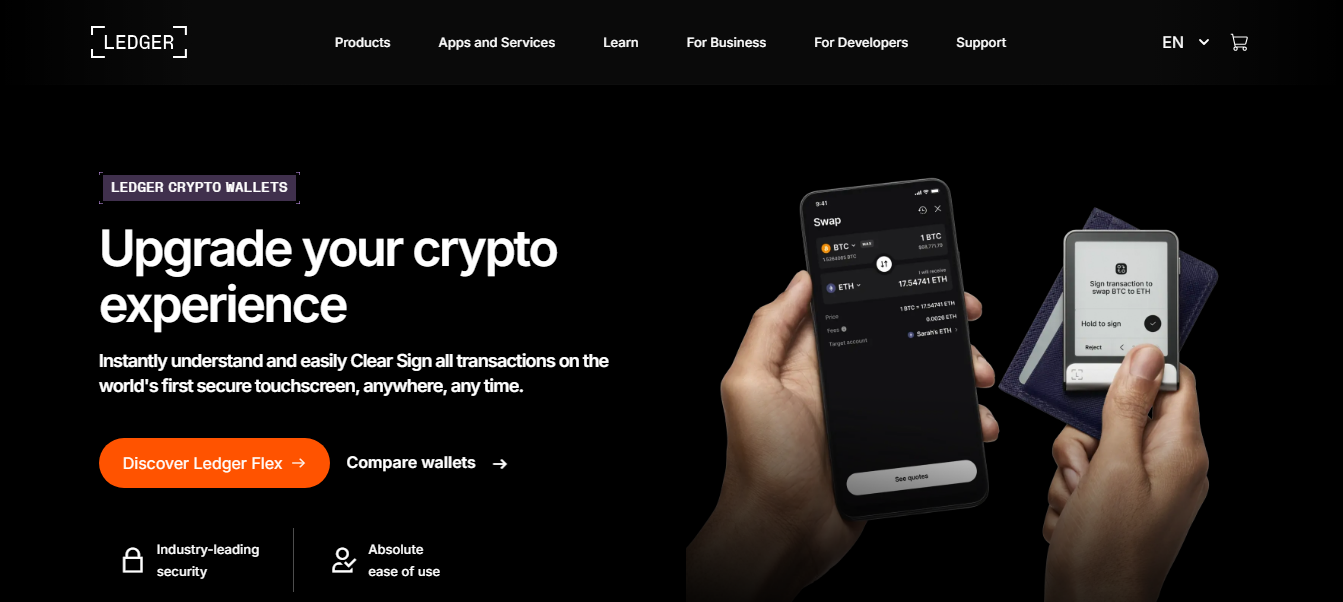How to Get Started with ledger.com/start: A Clear, Friendly Guide for New Crypto Users
Practical, step-by-step setup for Ledger hardware wallets — beginner-friendly first, then layered mid-level guidance for security, recovery, and everyday usage.
Why this guide?
If you’re new to hardware wallets, the process can feel technical and a little scary. This article walks you through the essentials from the moment you type ledger.com/start into your browser — without jargon overload. You’ll learn setup, key security concepts like seed phrase and private key, mid-level topics such as firmware updates and transaction signing, and real-world examples so you can use a Ledger device confidently.
Who should read this
- New crypto users who want a secure place to hold assets.
- People moving funds from an exchange to self-custody.
- Mid-level users polishing safety practices (firmware, passphrase use).
Setup Steps (Simple & Safe)
Beginner Foundations — What You Need to Know
What is a hardware wallet?
A hardware wallet is a small physical device that stores cryptographic keys (private keys) offline. Because the keys never leave the device, even if your computer is compromised, attackers can't steal your funds without physical access. Think of it as a digital safe — you still need to protect the combination (your seed phrase).
Key terms (quick)
- Seed phrase — the human-readable backup (usually 24 words) used to restore your wallet.
- Private key — the cryptographic secret that proves ownership of funds.
- Cold storage — keeping keys offline (hardware wallets are cold storage devices).
- Firmware — the device software; keep it updated for security patches.
- Transaction signing — approving a transaction on the device so the private key never touches your PC.
Mid-level: Best Practices & Mistakes to Avoid
Do This
- Store your 24 words offline on multiple physical copies (paper or metal).
- Use a unique, strong PIN and enable passphrase protection if you understand the tradeoffs.
- Update firmware only from the official Ledger Live app and verify release notes.
- Use a hardware wallet for larger amounts; hot wallets are convenient but riskier.
Avoid This
- Never type your seed phrase into any website, chat, or email.
- Don’t buy used hardware wallets without resetting and verifying.
- Avoid storing backups in cloud services or photos on your phone.
- Don’t share device recovery info with “support” that contacts you unsolicited.
A quick story: How a small habit saved a portfolio
Mia kept most of her coins on an exchange for convenience. After a small phishing attempt on her email, she switched the long-term funds to a hardware wallet. Months later, an exchange she used had a security incident — because she had moved large holdings to cold storage after reading a guide (like this one), her savings were untouched. The cost of the device was less than the stress avoided.
Advanced Tips: Passphrases, Accounts, and Interoperability
A passphrase (sometimes called the 25th word) creates an extra layer beyond the 24-word seed. Use it only if you understand the risks: losing the passphrase means losing access permanently. Multi-account setups with a single Ledger device let you manage different strategies (e.g., cold savings vs frequent trading) — each account appears separately in Ledger Live and third-party apps.
Interoperability: Ledger works with many blockchains directly or through third-party apps (DeFi, NFTs, staking). When using external apps, always confirm transaction details on your device screen before approving.
Frequently Asked Questions
Q: Is ledger.com/start the official setup page?
A: Use the exact address as text to access official Ledger setup guidance and download Ledger Live. Avoid clicking random links claiming to be support or setup pages shared over social media.
Q: Can I recover funds if I lose my device?
A: Yes, if you have the 24-word recovery phrase (and the passphrase if you used one). Keep backups in secure, separate locations.
Q: Should I enable a passphrase?
A: A passphrase adds security but increases responsibility — you must remember it. For most users, a well-protected 24-word phrase is sufficient; consider a passphrase for advanced threat models.
Q: What about firmware updates?
A: Keep firmware up to date via Ledger Live. Updates patch security issues and add functionality — but always verify you’re using the official app and release notes.
Terms we mentioned (naturally woven)
Throughout this guide you saw related terms such as hardware wallet, seed phrase, private key, cold storage, and firmware. These are the building blocks of safe crypto custody. Another term you’ll encounter is blockchain — the decentralized ledger your transactions get recorded on — and crypto exchange, where users often move funds from hot custody to a hardware wallet for long-term storage.
Practical Setup Checklist (copy this)
- Purchase a new device from an authorized seller.
- Navigate to ledger.com/start by typing it manually.
- Install Ledger Live and connect your device via official instructions.
- Create a PIN and write down your 24-word recovery phrase offline.
- Store backup copies in separate, secure physical locations.
- Enable firmware updates and verify release notes before installing.
- Practice small test transfers before moving large amounts.
Making a transaction — micro checklist
Before you approve any outgoing transaction on your Ledger device:
- Confirm receiving address carefully (watch for clipboard tampering).
- Check amount and network fees on device screen before signing.
- For new tokens or smart contracts, double-check contract addresses using trusted sources (not unknown websites).
Conclusion — Your next steps
Starting at ledger.com/start and following the official setup flow is a solid first step toward secure self-custody. Use the three-step setup above, protect your seed phrase, and practice small transfers before moving larger amounts. As you gain confidence, explore passphrases, multi-account setups, and how Ledger integrates with DeFi and staking services — always confirming every transaction on the device itself.
